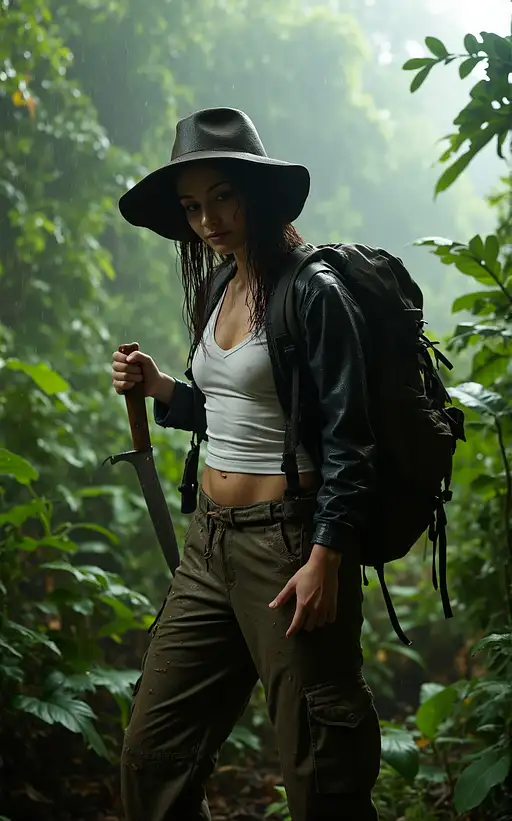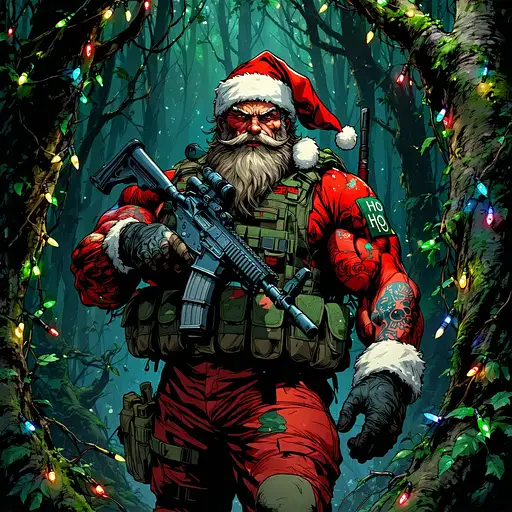
4 months ago
In this film still, a woman is seen exploring the dense and vibrant Amazon jungle. She embodies a sense of adventure and determination, which is accentuated by her attire and the surrounding environment. Her outfit is both practical and revealing, highlighting her adventurous spirit. She wears a white shirt that has become translucent due to the rain, clinging tightly to her skin and subtly hinting at her underlying curves. Over this, she sports a rugged leather jacket, left unzipped to reveal a glimpse of her collarbone, adding a touch of ruggedness to her look. Her cargo pants, soaked and splattered with mud, fit snugly around her legs, emphasizing her athletic and toned physique. On her head, she wears a wide-brimmed boonie hat, which is dripping with rainwater, providing some shelter from the relentless downpour. A heavy backpack, filled with essentials for her journey, rests securely on her shoulders, indicating her preparedness for the challenges ahead. In her hand, she firmly grips a machete, ready to clear any obstacles that come her way. Her hair, darkened and weighed down by the rain, cascades down her back in wet strands, giving her a wild and untamed appearance that complements the raw beauty of the jungle around her. The background is lush and teeming with life, featuring a variety of tropical plants and trees, their leaves glistening with raindrops. The atmosphere is misty, with rays of sunlight occasionally piercing through the dense canopy, casting an ethereal glow on the scene. The sounds of distant wildlife and the rustling of leaves add to the immersive experience of her adventure.




